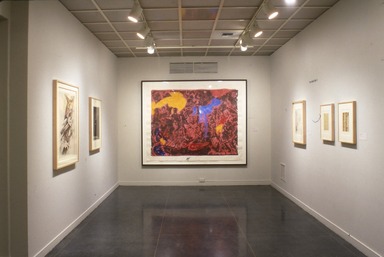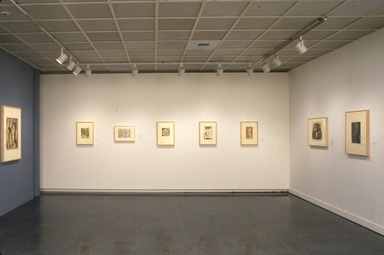

Expressionism to Neo-Expressionism: Twentieth-Century German Prints from the Brooklyn Museum Collection, November 03, 1995 through January 14, 1996 (Image: PDP_E1995i021.jpg Brooklyn Museum photograph, 1995)
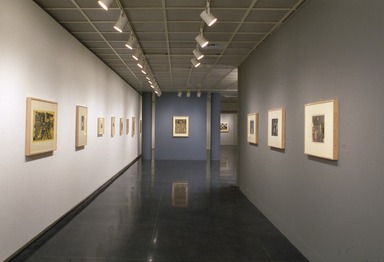
Expressionism to Neo-Expressionism: Twentieth-Century German Prints from the Brooklyn Museum Collection, November 03, 1995 through January 14, 1996 (Image: PDP_E1995i022.jpg Brooklyn Museum photograph, 1995)

Expressionism to Neo-Expressionism: Twentieth-Century German Prints from the Brooklyn Museum Collection, November 03, 1995 through January 14, 1996 (Image: PDP_E1995i023.jpg Brooklyn Museum photograph, 1995)

Expressionism to Neo-Expressionism: Twentieth-Century German Prints from the Brooklyn Museum Collection, November 03, 1995 through January 14, 1996 (Image: PDP_E1995i024.jpg Brooklyn Museum photograph, 1995)
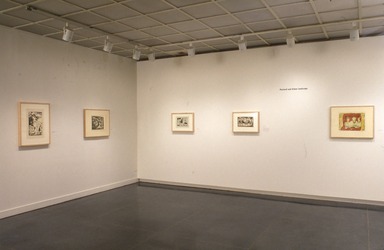
Expressionism to Neo-Expressionism: Twentieth-Century German Prints from the Brooklyn Museum Collection, November 03, 1995 through January 14, 1996 (Image: PDP_E1995i025.jpg Brooklyn Museum photograph, 1995)
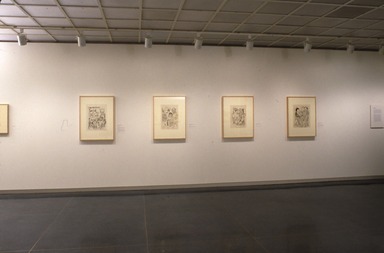
Expressionism to Neo-Expressionism: Twentieth-Century German Prints from the Brooklyn Museum Collection, November 03, 1995 through January 14, 1996 (Image: PDP_E1995i026.jpg Brooklyn Museum photograph, 1995)

Expressionism to Neo-Expressionism: Twentieth-Century German Prints from the Brooklyn Museum Collection, November 03, 1995 through January 14, 1996 (Image: PDP_E1995i027.jpg Brooklyn Museum photograph, 1995)

Expressionism to Neo-Expressionism: Twentieth-Century German Prints from the Brooklyn Museum Collection, November 03, 1995 through January 14, 1996 (Image: PDP_E1995i028.jpg Brooklyn Museum photograph, 1995)
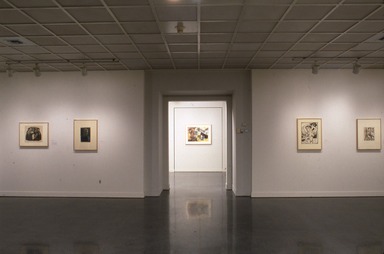
Expressionism to Neo-Expressionism: Twentieth-Century German Prints from the Brooklyn Museum Collection, November 03, 1995 through January 14, 1996 (Image: PDP_E1995i029.jpg Brooklyn Museum photograph, 1995)

Expressionism to Neo-Expressionism: Twentieth-Century German Prints from the Brooklyn Museum Collection, November 03, 1995 through January 14, 1996 (Image: PDP_E1995i030.jpg Brooklyn Museum photograph, 1995)
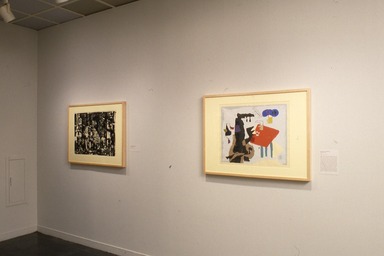
Expressionism to Neo-Expressionism: Twentieth-Century German Prints from the Brooklyn Museum Collection, November 03, 1995 through January 14, 1996 (Image: PDP_E1995i031.jpg Brooklyn Museum photograph, 1995)
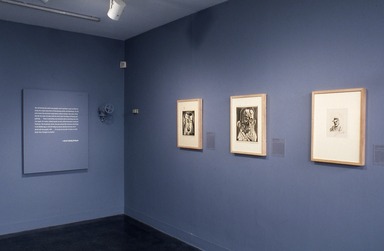
Expressionism to Neo-Expressionism: Twentieth-Century German Prints from the Brooklyn Museum Collection, November 03, 1995 through January 14, 1996 (Image: PDP_E1995i032.jpg Brooklyn Museum photograph, 1995)
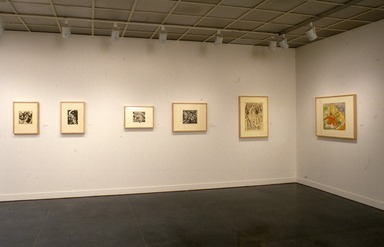
Expressionism to Neo-Expressionism: Twentieth-Century German Prints from the Brooklyn Museum Collection, November 03, 1995 through January 14, 1996 (Image: PDP_E1995i033.jpg Brooklyn Museum photograph, 1995)
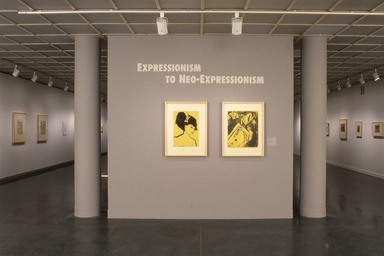
Expressionism to Neo-Expressionism: Twentieth-Century German Prints from the Brooklyn Museum Collection, November 03, 1995 through January 14, 1996 (Image: PDP_E1995i034.jpg Brooklyn Museum photograph, 1995)
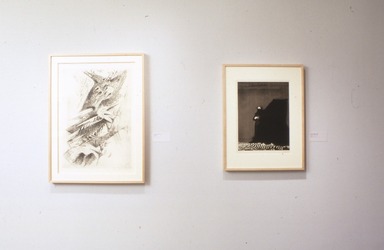
Expressionism to Neo-Expressionism: Twentieth-Century German Prints from the Brooklyn Museum Collection, November 03, 1995 through January 14, 1996 (Image: PDP_E1995i035.jpg Brooklyn Museum photograph, 1995)
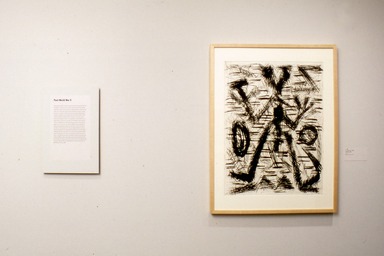
Expressionism to Neo-Expressionism: Twentieth-Century German Prints from the Brooklyn Museum Collection, November 03, 1995 through January 14, 1996 (Image: PDP_E1995i036.jpg Brooklyn Museum photograph, 1995)
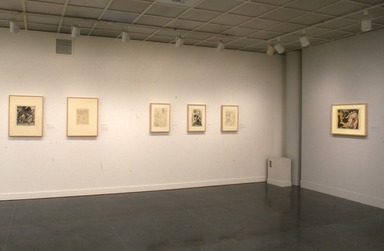
Expressionism to Neo-Expressionism: Twentieth-Century German Prints from the Brooklyn Museum Collection, November 03, 1995 through January 14, 1996 (Image: PDP_E1995i037.jpg Brooklyn Museum photograph, 1995)
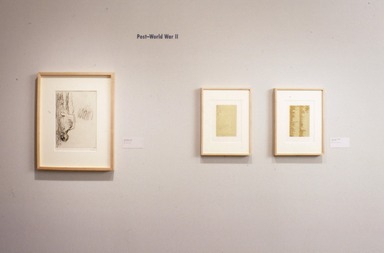
Expressionism to Neo-Expressionism: Twentieth-Century German Prints from the Brooklyn Museum Collection, November 03, 1995 through January 14, 1996 (Image: PDP_E1995i038.jpg Brooklyn Museum photograph, 1995)

Expressionism to Neo-Expressionism: Twentieth-Century German Prints from the Brooklyn Museum Collection, November 03, 1995 through January 14, 1996 (Image: PDP_E1995i039.jpg Brooklyn Museum photograph, 1995)
Expressionism to Neo-Expressionism: Twentieth-Century German Prints from the Brooklyn Museum Collection
-
June 1, 1995
Eighty lithographs, etchings, and intaglios by artists such as Emil Nolde and Käthe Kollwitz will comprise the exhibition Expressionism to Neo-Expressionism: 20th-Century German Prints at The Brooklyn Museum, on view at the Museum from November 3, 1995, through January 14, 1996. Significant, recent, additions to the Museum’s collection, including the lithograph Striptease by Max Beckmann and Strasse in Berlin-Freidenau by Ludwig Meidner and contemporary Neo-Expressionist prints by artists such as Georg Baselitz and Jorg Immendorf, will enhance the exhibition, which is a partial reinstallation of the Museum’s 1988 German Expressionist show.
Under the auspices of former Curator of Prints and Drawings Una Johnson, The Brooklyn Museum began collecting German Expressionist works in the late 1930s, when Germany was perceived as an unfriendly nation. The Museum was one of the first in the United States to recognize the importance of the German Expressionist artists during the lifetimes of many of them at a time when German art was not well received in this country. Because of this foresight, the Museum possesses an acclaimed collection of German Expressionist prints, representing one of the most compelling and influential movements of modern art, and continues to collect Expressionist works on paper.
Immediacy and honesty were prized by both the Expressionists and the Neo-Expressionists. The German Expressionists, who worked mostly in the first half of the 20th century, approached printmaking as a creative process with which to experiment and to assert their high regard for unmediated experience. These concerns led them to develop new and unconventional ways of working, which produced some of the most striking prints of the 20th century. Using various techniques, dramatic perspectives, and powerful subject matter, these intimate prints bring forceful, human images to the foreground. The artists aimed to fuse art and life and examined aspects of society, nature, and religion in their work. These ideas and processes were developed by the Neo-Expressionists, who emerged in the late 1970s.
Marilyn S. Kushner, Curator of Prints and Drawings at The Brooklyn Museum, is the curator of Expressionism to Neo-Expressionism: 20th-Century German Prints at The Brooklyn Museum. In conjunction with the exhibition and in honor of Una Johnson, a public lecture will be given on December 10, 1995 by Donald Kuspit, distinguished art critic, professor of art history and philosophy at the State University of New York, Stonybrook, and A.D. White Professor-at-Large at Cornell University.
Brooklyn Museum Archives. Records of the Department of Public Information. Press releases, 1995 - 2003. 01-06/1995, 013-14.
View Original
